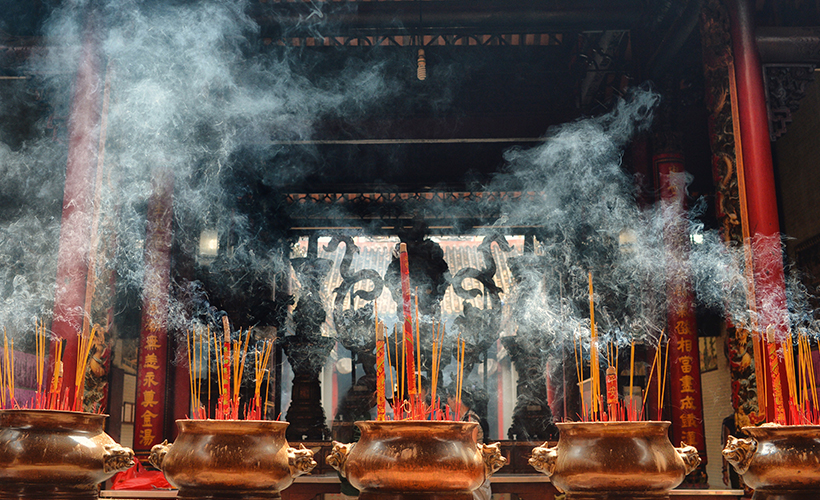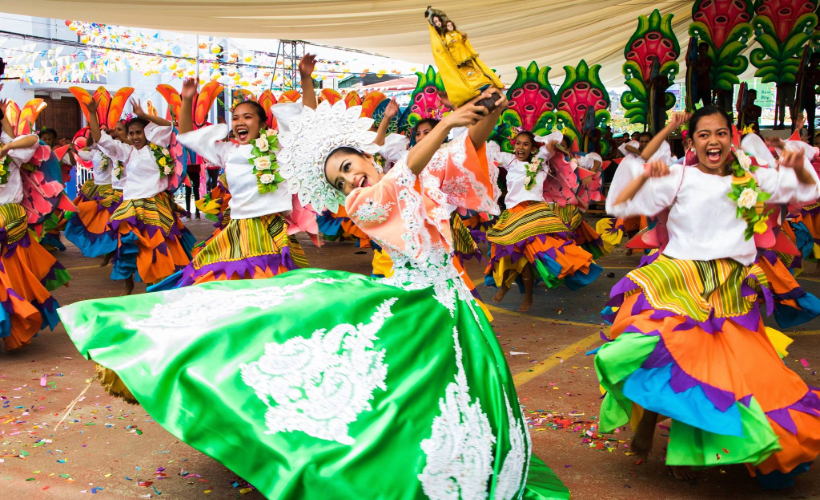
You might have heard by now that everything’s more fun in the Philippines. From her paradisiacal beaches surrounded by crystalline waters to the volcanoes and mountains you can explore, the Southeast Asian archipelago has plenty to offer. But more than the beautiful climate or the friendly people, the Philippines is a place of interest for another reason: its festivals.
Along with national celebrations, each village also has its own festivals and traditions. With more than 81 provinces on its 7,000-plus islands, the total number of festivals held in the country likely amounts to thousands as each province has multiple barangays (district or inner-city neighbourhood), municipalities, and towns who all have their own fiestas. These cultural events, local or national, celebrates the people in a beautiful tradition full of music, colour, and dancing that you just cannot miss when visiting. It’s hard to pick between the many options, but here are a few, bigger ones, that stand out among them all.
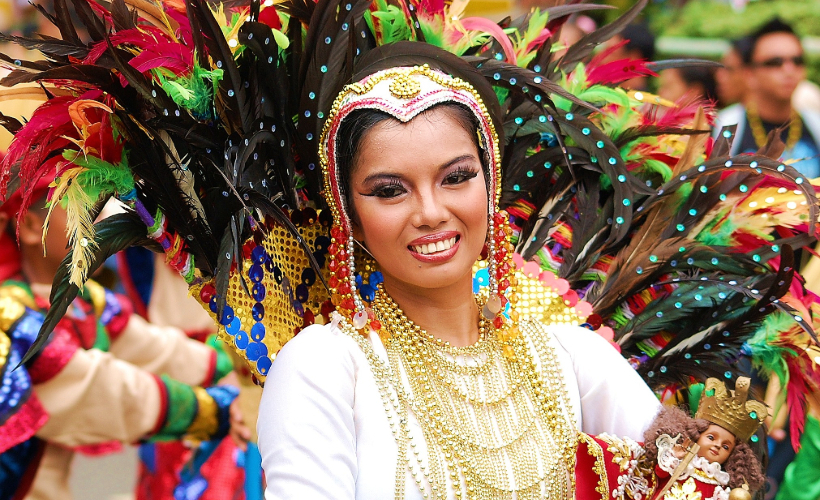
Sinulog
The Sinulog-Santo Niño Festival is one of the most widely-celebrated events in the country. Rejoicing the life of baby Jesus, the feast of Santo Niño de Cebu brings people from all over the country and the world to the city of Cebu to celebrate every third Sunday of January. It’s a three-day celebration that features a Fluvial Parade on Saturday and ends with a procession for Santo Niño (Holy Boy) on Sunday and this procession is nothing short of extraordinary. People like to check into the hotels along the route of this bright parade full of dancing that’s reminiscent of a Carnaval do Brasil. It’s a great way to make sure you can see everything and even take part too!
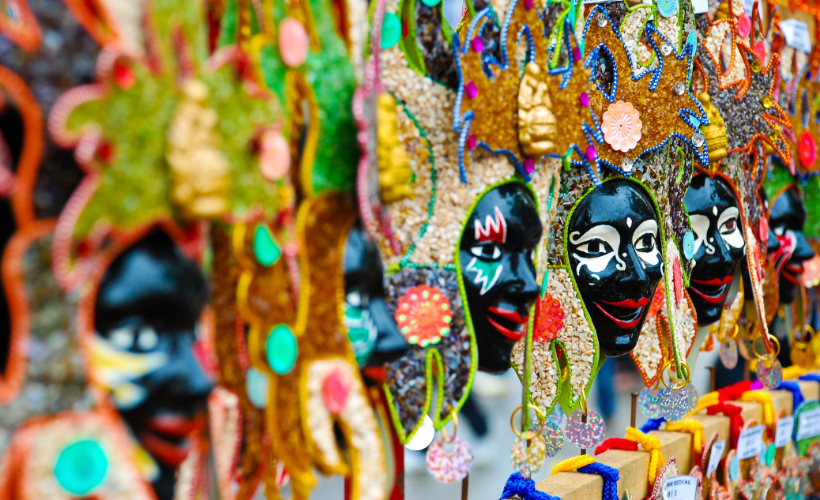
Ati-Atihan Festival
Think of this as the mother of all festivals in the Philippines. Also held every January on the feast of Santo Niño to honour him, the Ati-Atihan Festival is another fiesta you cannot miss. It’s full of colour and partying in the streets with a history that dates back almost a millennium! You can experience this event in Kalibo on Panay island. The festival’s name is an homage to the settlers of Panay that were called Atis/Aetas. The name of the festival, in fact, translates to “to act like Aetas.”
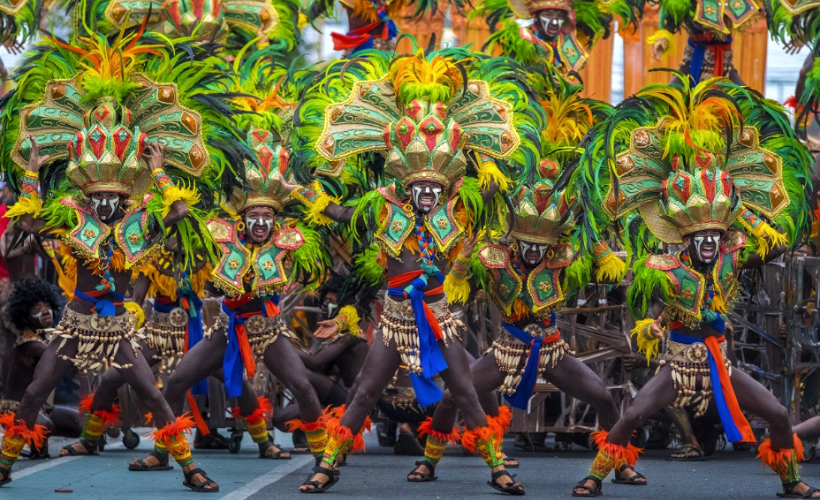
Dinagyang
As part of their celebration of Santo Niño, the people of Iloilo City also have their own celebration, the Dinagyang festival, on the fourth Sunday of January. Like Sinulog, the festival also has three parts that happen on Friday, Saturday, and Sunday. The Fluvial Parade is on Friday, followed by the Kasadyahan Festival (a cultural performance competition), and finishing on Sunday with the Ati Tribes Competition. The difference between this festival from the other two is that the celebration requires tickets and they happen at five different stages around the town.
According to studies, the Philippines has a new number of islands. It’s increased from 7,100 to 7,641 today! This means you’ll never run out of places to see when visiting this amazing country:
5 Jaw-Dropping Places In The Philippines For A Dose Of Adventure

Parada ng Lechon
If you’re looking for something that takes place in the middle of the year, you’ve got options, too. The Parada ng Lechon (Roasted Suckling Pig Parade) happens every 24th June, in honour of St John the Baptist. Besides the mouth-watering lechons (roasted suckling pig) that are put on show like famous personalities, and eventually enjoyed by the folks in Batangas, the entire town takes part in a water fight, called basaan (to wet).
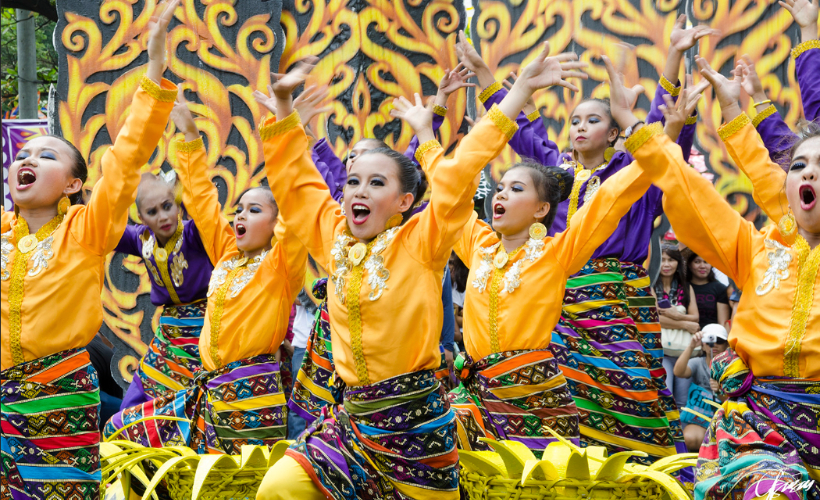
Kadayawan Festival
If you’re not into food fests, you can check out the Kadayawan Festival celebrated on the third weekend of August. It’s held to honour the diverse natural resources of the city of Davao and is also a celebration of the area’s cultural diversity that’s made up of 11 different tribes. The highlights of the Kadayawan Festival are the street parade that features the Indak-Indak sa Kadalanan (a vibrant street dance) right before the Kadayawan Festival Floral Parade that showcases local blooms.
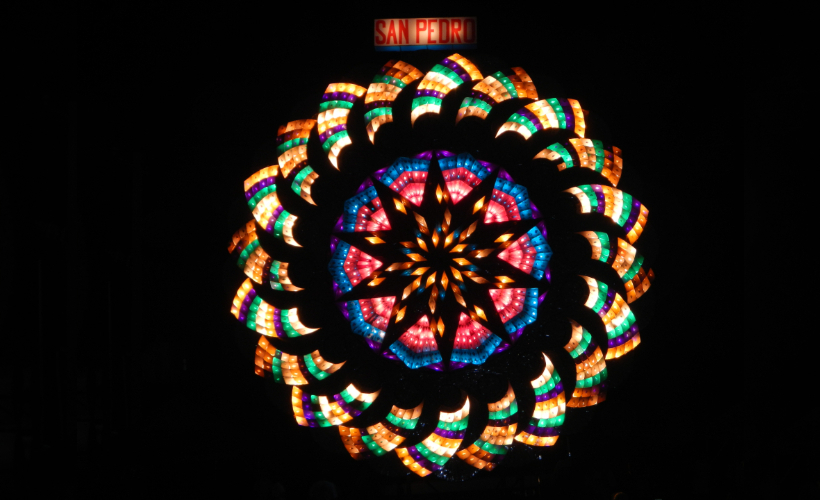
Christmas
Like any other Catholic country, the year’s festivities aren’t complete without topping it off with a good Christmas celebration at the end of the year. In the Philippines, Christmas starts as soon as it’s a ‘ber’ month (September, October, November, and December). While many people might be excited enough to put up lights starting in September, the Ligligan Parul or Giant Lantern Festival is the biggest attraction of the most wonderful time of the year and happens mid-December in the City of San Fernando.
At this festival, you’ll be treated to a unique light show of amazing traditionally-crafted star-shaped Christmas lanterns on the second Saturday of December. They are, as the translation of the Ligligan Parul indicate, literal giant lanterns of almost seven metres in diameter. They can also be viewed from a plush VIP area for those who can afford the tickets.
These and many other festivals are a once-in-a-lifetime experience, and most of them happen during the best part of the year weather-wise, from November to April. Also, make sure to check for all health requirements such as shots needed. Getting the Travelers Insurance app prior to the trip will make a difference, too. With the necessary out of the way, there’s an attraction here for everyone. So bring on your best smile, your bags, an open mind, and jump right into the best celebrations of the Philippines!

![India’s Most Colourful Cities [VIDEO]](https://zafigo.com/wp-content/uploads/2019/03/bada-bagh-3181803_1920.jpg)
